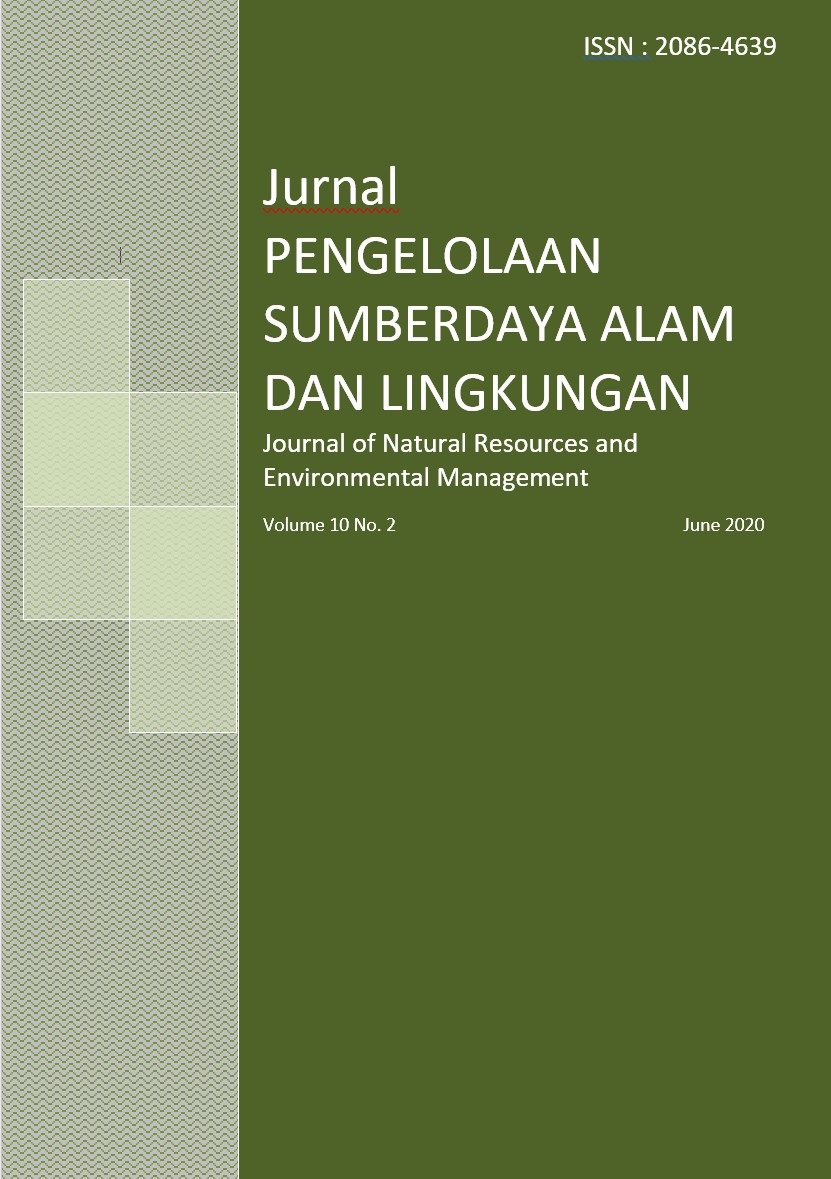Soil redox potential as predictor of heterotrophic respiration of an oil palm plantation-peatland in Riau, Indonesia
Abstract
Respirasi tanah terdiri atas respirasi autotrof dan heterotrof. Pada lahan gambut, respirasi heterotrof setara dengan laju dekomposisi bahan gambut. Penelitian ini bertujuan mengembangkan model potensial redoks (Eh) tanah sebagai penduga respirasi heterotrof dari perkebunan kelapa sawit pada lahan gambut tropika. Respirasi tanah diukur menggunakan metode sungkup tertutup pada plot close-to-tree (berjarak 2 m dari pohon) dan far-from-tree (4.5 m dari pohon), sedangkan untuk respirasi heterotrof pada plot root-cut (4.5m dari pohon) yang disiapkan dengan pemotongan akar hingga kedalaman 80 cm dan diinkubasi selama 8 bulan. Respirasi tanah pada lokasi penelitian 40.81 ton CO2 ha-1.th-1, 50.53% darinya berasal dari respirasi komponen heterotrof (RKH). Respirasi heterotrof berkorelasi positif dengan Eh tanah pada pH 7 di kedalaman -30 dan -90 cm (Eh7~30 and Eh7~90) dan berkorelasi negatif dengan tinggi muka air tanah. Nilai koefisien korelasi linier sederhana yang signifikan, r= 0.84 dan 0.87; n= 12, dengan RKH masing-masing ditunjukkan oleh Eh7~30 and Eh7~90. Oleh sebab itu, kedua faktor tersebut dapat disarankan sebagai penduga RKH dengan persamaan: RKH (ton CO2 ha-1.th-1) = 18.2 + 0.029 Eh7~30 + 0.037 Eh7~90 (Eh dalam mV).
Authors
Authors who publish with this journal agree to the following terms:
- Authors retain copyright and grant the journal right of first publication with the work simultaneously licensed under a Creative Commons Attribution License that allows others to share the work with an acknowledgement of the work's authorship and initial publication in this journal.
- Authors are able to enter into separate, additional contractual arrangements for the non-exclusive distribution of the journal's published version of the work (e.g., post it to an institutional repository or publish it in a book), with an acknowledgement of its initial publication in this journal.
- Authors are permitted and encouraged to post their work online (e.g., in institutional repositories or on their website) prior to and during the submission process, as it can lead to productive exchanges, as well as earlier and greater citation of published work (See The Effect of Open Access).
Article Details
10.1088/1755-1315/771/1/012029
10.1088/1755-1315/756/1/012049
10.29244/jpsl.11.3.430-441






